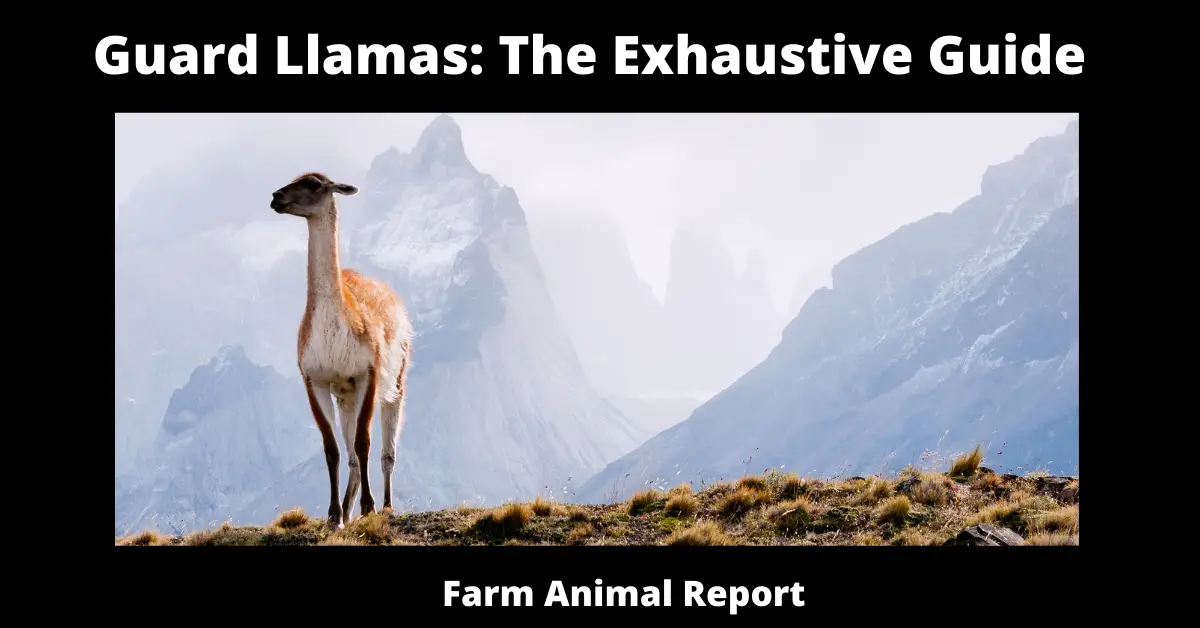- At least 18 months of age is required for a guard llama.
- Llamas used as guards should be gelded.
- Never should guard llamas be aggressive toward humans.
- Llamas that are unconcerned about surrounding activity or show little interest when an unfamiliar animal approaches them may be slow to recognize the danger posed by a predator and are therefore unlikely to make good guards.
- It is critical to match guard llamas with jobs that they are physically capable of performing. Larger flocks and open, rough terrain impose greater physical demands on the llama, which may not be optimal.
Guard Llamas
Guard Llamas – A guard llama is a llama, guanaco, alpaca, or hybrid used in farming to protect sheep, goats, hens, or other livestock from predators such as coyotes, dogs, foxes, and others. In the past, it was recommended to use a single gelded (castrated) male. It has been discovered in recent years that single, unbred females make superior and safer guardians. Additionally, they do not risk copulation (hence suffocation) or chasing the smaller livestock.
Guard llamas can defend themselves against predators in a variety of ways. Llamas are naturally vigilant and aware of their surroundings and may attract an intruder’s attention by making an alarm call that sounds like a rusty hinge. They may approach an intruder on foot or foot and chase, kick, or spit at it. Others may choose to remain apart from the group and keep an eye on the intruder.
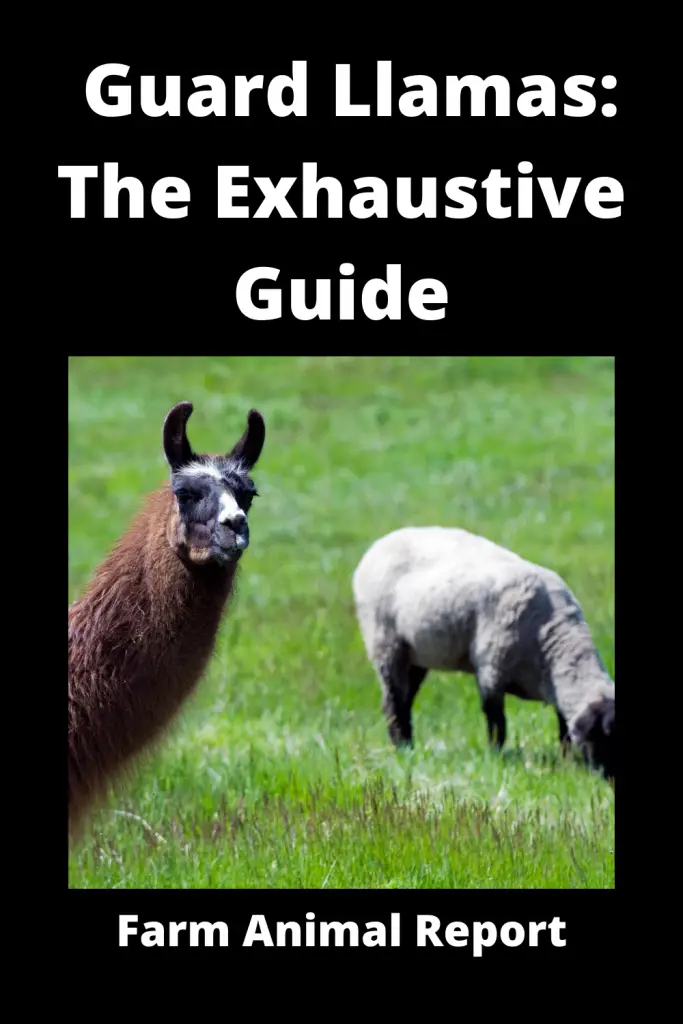
While llamas have been known to kill predators (such as coyotes), they should not be classified as attack animals. Generally, they are effective against single intruders, not packs. Guard llamas were most prevalent on ranches in the Western United States, where larger predators such as coyotes were more common. However, not every llama will guard, and it should not be assumed that a llama will guard simply because it is a llama.
Primer Of Livestock Guardian Animals
Multiple guard llamas, according to research, are not as effective as a single llama. Multiple males are more likely to bond with one another than with the livestock and disregard the flock. A two-year-old gelded male form instinctive bonds with his new charges and is highly effective at preventing predation. Certain llamas appear to bond more quickly with sheep or goats if introduced shortly before lambing. Numerous sheep and goat producers report that a special bond forms quickly between lambs and their guard llama, with the llama being especially protective of the lambs.
18 ways Alpaca Farmers make Money
The majority of research on guard llamas’ effectiveness has been conducted on sheep. According to a 1990 study, 80% of sheep producers who use guard llamas rated them effective or very effective. The study discovered that average rates of loss to predators decreased from 21% to 7% following the introduction of a guard llama. Other studies found that over half of guard llamas eliminated predator-related losses. Llamas have harmed and even killed dogs and coyotes.
Do Llamas make good Guard Animals?
Once they learn their territory, they are curious and territorial animals. While some of the success is due to the personality of the individual llama, llamas can generally perform admirably as guardians.
Their inquisitive and protective nature makes them an excellent choice for specific jobs. Llamas can successfully guard sheep, goats, pregnant cows, deer, alpacas, and foul. However, these camelids have limits, and exceeding them can result in severe injury or death.
They do not fare well against a pack of coyotes, dogs, or wolves. Multiple animals vs a single llama are unlikely to work. Additionally, llamas should not be placed in situations where they must defend themselves against large predators.
Guard Llama Basics
It is critical to take the time to determine whether a llama is a good fit for your livestock guarding needs. Along with interviews with llama farmers and current owners. The following are some guidelines for recruiting llamas to guard livestock:
Finding the Right Llama
While gelded males are more popular, females make excellent guardians as well. A guard llama’s health and activity level must be maintained. Size and gender are irrelevant in comparison to curiosity. They can successfully guard poultry such as chickens, turkeys, or peafowl, but llamas do not regard them as members of their herd in the same way they regard larger farm animals.
Guard Llamas Advantages and Disadvantages
Advantages
- A llama is inherently social, and if he is the only llama in the area, he will typically remain with his pasture mates. After a careful introduction, llamas typically form strong bonds with their companions. There is no reason for you to have an extended training period with him. While some sheep, goats, and other livestock are fearful of herding dogs or are skittish around them, they will accept a llama in their field. Llamas can protect sheep, goats, calves, deer, alpacas, and poultry.
- Llamas are predisposed to be aggressive toward foxes, coyotes, and dogs, as well as certain other predators. This protection extends to the llama’s companions as well. Sure llamas take on a leadership role in their flock, patrolling their territory and seeking higher perches from which to observe their surroundings. Guard llamas typically react to predators by watching them intently and posturing, emitting a shrill alarm call, spitting, or herding their flock mates away from the danger. The majority of guard llamas will also approach the predator and attempt to chase or strike it; however, very few guard llamas will actively seek to kill a predator.
- If you raise sheep or goats, a llama’s maintenance, shelter, and feeding requirements are similar. He will eat or graze primarily on the same foods as the flock or herd.
- Llamas are not aggressive in their opposition to fencing. They do not roam, dig, bark, or chew on wood the same way dogs do. They do poke their heads and necks through things, which makes non-electric, high-tensile wire fences, as well as fences, gates, or panels with large openings, somewhat dangerous for them. Barbwire fences can be extremely dangerous to llamas for the same reasons as above, but they also have the potential to catch their fleeces.
- Llamas have a calm disposition and generally do not pose a threat to humans. They may appear less intimidating than a large dog to your neighbors or farm visitors. Llamas must be handled and socialized with humans, or they can become dangerous as adults. Llamas must be accustomed to handling, shearing, toenail trimming, and veterinary care regularly.
- When you purchase an experienced guard llama, he will immediately provide predator control. Llamas also have a long working life due to their 20 to 25-year lifespan.
- Llamas can produce fiber that you or your customers may be interested in.
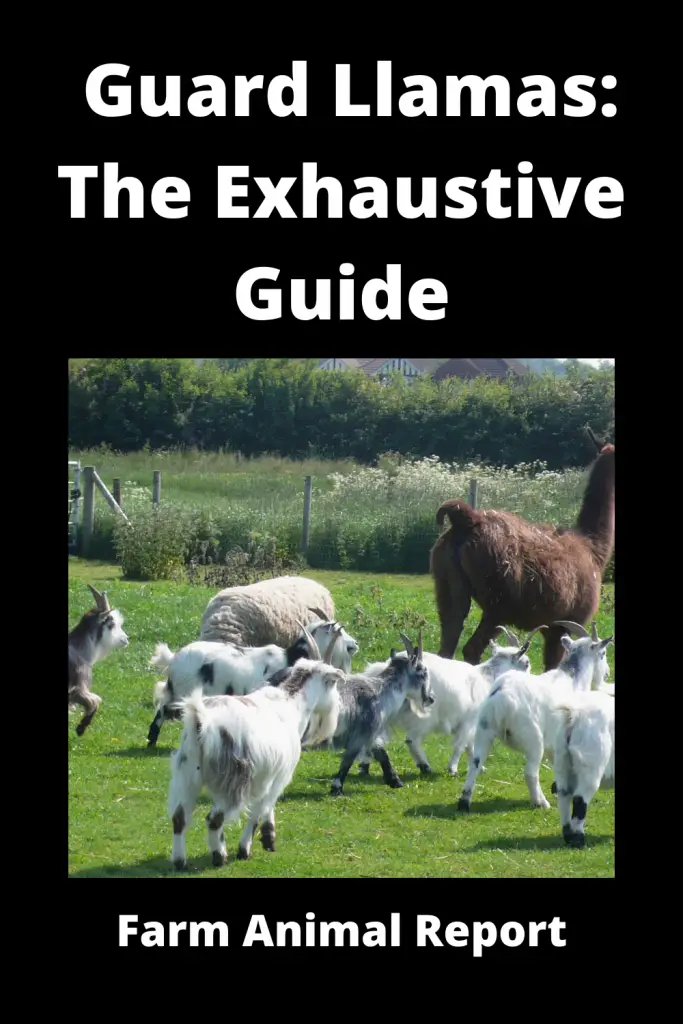
Disadvantages
- Llamas are also prey for coyotes, dogs, wolves, bears, bobcats, and mountain lions. Llamas are incapable of defending against these more severe threats. While a guard llama may be able to deal with a single coyote or roaming dog, they are incapable of dealing with large groups. Indeed, most llama and alpaca breeders employ livestock guard dogs to protect their herds from predators. Llamas do not generally protect feral hogs or small predators such as raccoons, opossums, or large birds. Since llamas do not bark as loudly as dogs, you may be unaware that a predator is threatening your stock, particularly at night. If predator pressure is low and you can monitor your pastured animals during the day, a guard llama has a better chance of success.
- Llamas will not protect your family or farm.
- Guard llamas have a lower success rate in densely forested pastures, large open ranges, or situations with high predator pressure. Because llamas originated in the high, arid Andes Mountains, they can struggle in prolonged periods of extreme heat or humidity.
- Llamas are not always peaceful flock companions. Certain llamas may injure or harass livestock and may obstruct the birthing process. Certain llamas are unable or unwilling to adjust to life without their stock.
- Llamas should not be used in conjunction with livestock guard dog or herding dogs.
- If you are unfamiliar with llamas, you will need to educate yourself on their handling and care. You should seek out a knowledgeable individual to assist you in selecting your llama, taking into account both health and behavior. In a subsequent post, I will discuss how to choose a guard llama.
- Naturally, llama shelters must be taller than those used for goats or sheep. Llamas cannot also use complex salt or mineral blocks, and their mineral mix contains copper, which is toxic to sheep. You will need to provide an appropriate loose salt or mineral mix for your llama.
- Adult male llamas can be dangerous to humans if they are not trained or socialized.
- Certain llama breeders will not sell you a guardian llama if they believe the llama will be in grave danger from predators.
How much does a Guard Llama Cost?
You may be fortunate enough to come across an experienced llama for sale, or you can purchase directly from a breeder. You can start your search for a reputable llama breeder by contacting one of the numerous regional or national llama associations. Certain breeders concentrate their efforts on raising llamas for use as livestock guardians.
Expect to pay between $500 and $1500 or more for a male llama that has been gelded, with females being slightly more expensive. Bear in mind that some breeders will refuse to sell you a llama for use as a guardian if you have serious predator problems beyond foxes or the occasional solitary coyote. Llamas are truly defenseless against packs of dogs or coyotes, as well as wolves, bears, and big cats. When confronted by these dangerous predators, llama breeders protect their animals with farm dogs.
What Animals eat Llamas?
One disadvantage of guardian llamas is that they are natural prey for bears, wolves, coyotes, and wild cats. While a llama effectively scares away a lone coyote, wild dog, or bear, they are ineffective against a pack of canines or large wild predators. Additionally, they do not protect small mammals or rodents.
Do Llamas kill Wolves?
While a llama is capable of killing a wolf, this is not common. Although llamas are taller than wolves, they pose a minor threat to the predator. Llamas may be able to protect their livestock and may even chase away a wolf, but they are unlikely to kill one.
Llamas are capable of killing some predatory animals, but wolves are not typically included. It is critical to understand a llama’s limitations about wolves and how to protect them and your livestock if wolves become a problem on your property.
Do Llamas Guard Chickens?
Llamas typically form bonds with the livestock with which they are raised. Additionally, their size and disposition help them ward off predators. This is why many goat and sheep owners hire a llama or two to guard their livestock. What about chickens, on the other hand? Will they also be protected by llamas?
While llamas are excellent at protecting livestock, unfortunately for chickens, they are not typically considered part of the herd. While llamas can drive away from some predators, they can also stand by and allow the chickens (or themselves) to fall prey to predators.
The likelihood that your llama guardian will feel protective of your chickens is unknown. It can help if the llama is raised alongside chickens, but bonding is not common. Worse yet, llamas may defend the chickens against you as well, especially if they believe you intend to harm them. Before bringing a llama onto your farm, inquire with the breeder or seller about the llama’s tolerance for human handling.
Despite their shortcomings as chicken protectors, they can coexist peacefully on the same pasture. Only the exceptionally rare and temperamental llama should be kept in a separate paddock. If you’re considering llamas solely to guard chickens, a dog (the great Pyrenees is a popular choice) or geese as livestock guardians for your chickens would likely be a better fit.
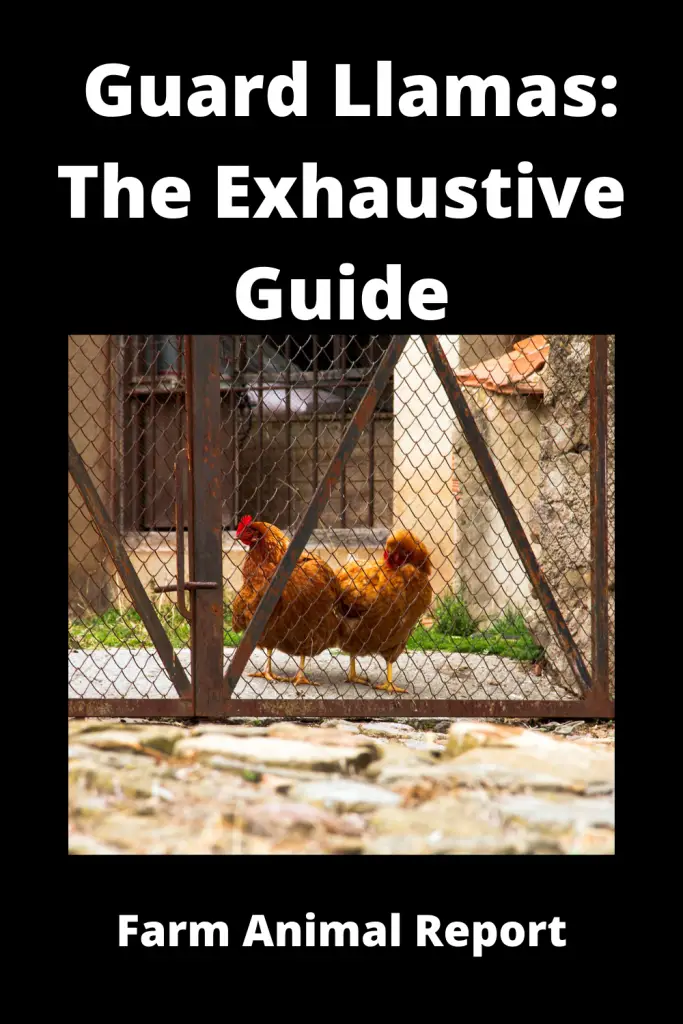
Can Llamas hurt Chickens?
Your llamas are unlikely to attack or harm your chickens. However, if your llama has a behavioral issue, there is a possibility that they will clash. If things deteriorate sufficiently, one of them may be harmed, but this is extremely unlikely.
For optimal results, either raise the llamas alongside your chickens. If you must introduce llamas and chickens later in life, give them 1-2 months in separate paddocks but within line of sight of one another. They should become accustomed to being around one another during those two months and then move in together.
Supervise them initially to identify any early problems and get a sense of how they will treat one another. However, if your llama does not perceive the chickens as part of the herd, they may develop depression or become temperamental.
How Long Will It Take for a Llama to Get Used to Chickens?
If a llama is raised alongside chickens, bonding may be more accessible. While this is beneficial for both livestock, llamas may exhibit behavioral issues if not raised with other llamas. Lack of development due to isolation from other llamas can result in a few personality issues and undesirable behaviors, such as aggression. However, assuming the llama is well-behaved, how long will they take to adjust to chickens? Llamas can take up to two months to stop alarming and become accustomed to chickens.
Maintain them in separate paddocks (but within line of sight) during this time and reintroduce them after 1-2 months. Supervise them, and if everything goes according to plan, the llamas will have adapted to being around the chickens. However, even if you obtain your llama from a reputable breeder and are free of developmental issues, they may never become accustomed to chickens. Generally, llamas prefer to live in herds with their four-legged companions, such as goats and sheep.
Are Llamas good Guard Animals for Goats?
Llamas and alpacas make excellent guardians because they quickly bond with goats and consume the same feed. Males who have been castrated make the best goat guardians. Males can injure goats when attempting to mount them and can also be excessively aggressive toward humans.
Unlike farm dogs, llamas are more effective as guardians when left alone rather than in a pack. However, a llama and guard dog combination can be trained to cooperate. Llamas require strong fences to assist them in their work. If a guardian llama’s aggressive attitude is ineffective in scaring away a dog or coyote, the predator may kill him.
Is a Llama a Sheep?
Although early writers compared llamas to sheep, their resemblance to the camel quickly became apparent. Carl Linnaeus’ Systema Naturae (1758) classified them alongside alpacas in the genus Camelus. They were, however, separated from the guanaco by Georges Cuvier in 1800 and given the name lama. DNA analysis established that the guanaco is the llama’s wild ancestor, while the vicua is the alpaca’s wild ancestor; the latter two were placed in the genus Vicugna.
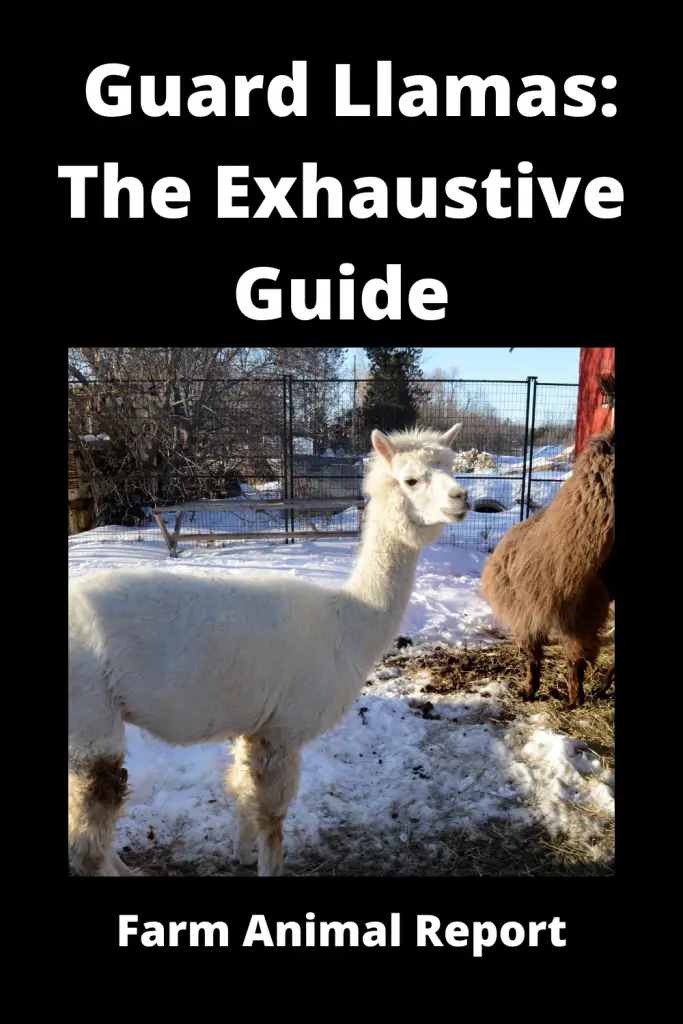
Do Llamas Fight Coyotes? Llama vs Coyote
Llamas are capable of killing a variety of predators that may attack them or the pastured livestock. Llamas have been known to combat with and kill coyotes that prey on their small livestock, including calves, goats, and sheep. Guard llamas are also capable of killing wild or domesticated dogs that approach livestock. While single guard llamas do not always fare well against packs of wolves or dogs, they are generally effective at scaring them away. Llama vs Coyote the llama will win.
Larn More – 18 Ways to make Money Alpaca Farming
Final Thoughts
Llamas make excellent guard animals, protecting your livestock and even eliminating predators that attempt to attack them. They cannot typically kill wolves, but they can be pretty effective at fending them off. If wolves become a problem on your farm, assist your guard llama and do everything possible to keep the wolves at bay.
Llamas make excellent sheep and goat guardians on small-scale or hobby farms and homesteads. They are most effective in areas where the threat of predators is low and large predators such as bears, and wild cats are absent.


